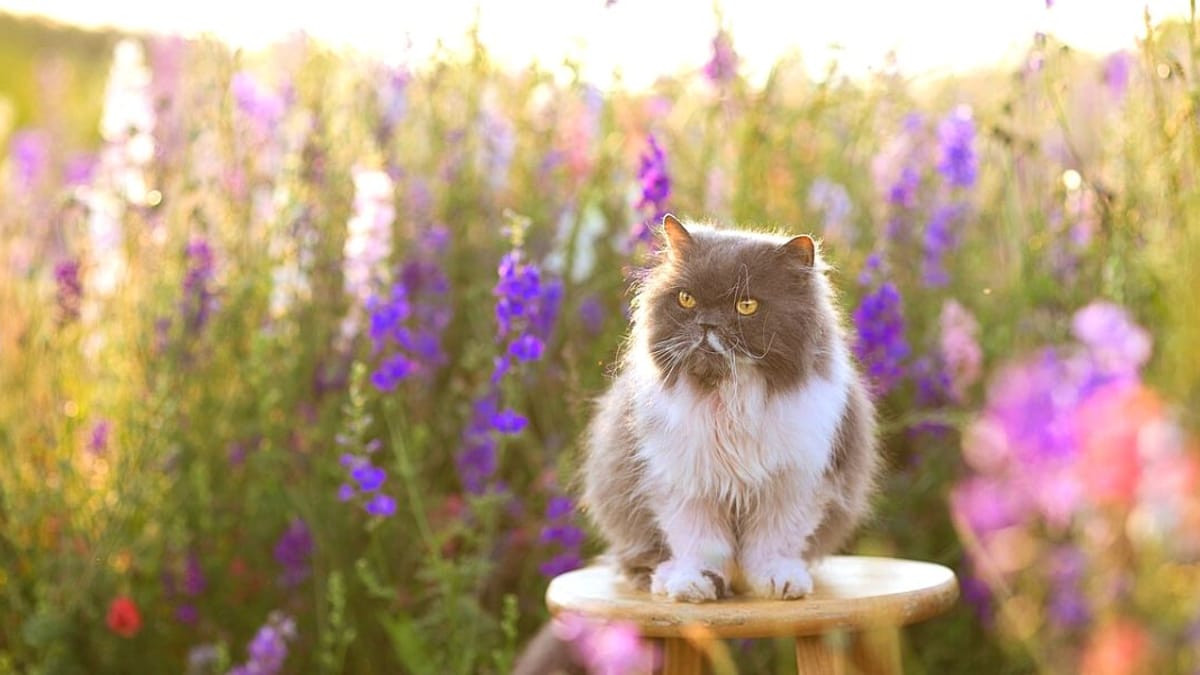With the arrival of spring, some dangers for pets also return. We owners must be aware of everything concerning our four-legged friends.
Parasites, processionaries, toxic plants, moulting hair, seasonal fruit and vegetables: here’s what you need to know and what to watch out for in March if you have a cat.
March plants toxic to cats
Temperatures rise and so does the desire to spend time outdoors with our animal friends.
However, we must not forget that in March, with the beginning of spring, some dangers for pets return: fleas, ticks, processionary moths, but also poisonous plants for cats. All elements that can transform a beautiful day under the warm spring sun into a real danger to the health of our cat.
Here is one list, not exhaustiveof spring plants toxic to cats and symptoms (beyond vomiting and diarrhea) which can cause:
The consequences of ingesting plants that are toxic to cats can range from simple dermatitis to vomiting and diarrhea, but can also cause acute hepatitis and death. Contact a vet if you think your pet has ingested a poisonous plant.
- Dracaena: chewing or ingestion of the plant by the feline causes hypersalivation, dilated pupils.
- Tulips – the bulbs of these flowers can even lead to collapse or coma.
- Nettle: very stinging both for us and for animals, it causes blisters in the mouth, possible breathing difficulties.
-
Snowdrop: the bulb is very poisonous to cats and other animals. Symptoms of poisoning include excessive salivation and nausea.
- Yucca: if Micio ingests parts of the plant, he can present symptoms such as hypersalivation, colic, hypothermia but also paralysis of the hind legs and coma.
- Hyacinth: Hyacinth poisoning symptoms are profuse salivation, pain when swallowing.
- Mimosa: digestive problems, edema, excessive salivation, seizures, loss of balance, dilated pupils, kidney failure, tremors, arrhythmia, difficulty breathing.
-
Narcissus: the leaves and the bulb if ingested cause hypersalivation, epileptic crises, drowsiness, cardiovascular or intestinal disorders, irregular heartbeat and even death (if even just 15 grams of this flower are eaten).
Spring moult of cat fur
In the spring months, cats can change up to half of the hair that they renew during the whole year! This is because in spring the felines shed a large part of their coat to replace it with a finer and lighter one, better withstanding the summer heat.
Dangerous insects: ticks, fleas, processionaries
Ticks
Among the most fearsome spring pests are ticks. If Micio has a habit of leaving the cat’s tick outside the house (Ctenocephalides felis) can be a problem for him but also for us humans: the bite of ticks can carry viruses and bacteria responsible for serious, even fatal, diseases, as well as causing dermatitis and itching.
Fleas
Fleas are small insects that can infest our pets and settle in the house where they live. These insects can cause intense itching and dermatitis, and if left untreated, they can take up residence in the home making it difficult to get rid of.
To prevent this, as soon as the animal comes home, brush it thoroughly, checking that it does not have parasites (such as fleas and ticks). In addition to this, the use of a pesticide is highly recommended, asking your vet for advice.
Processionarie
Another danger for cats in March, and more generally in spring and early autumn, are the so-called processionaries.
Seemingly harmless hairy caterpillars who walk in line descending from trees such as pines and oaks, are instead very dangerous for people and animals.
With its bristles highly irritating and causticthe Thaumetopoea pityocampa it can cause serious damage such as rashes, dermatitis, vesicles and even necrosis of the tissues it comes into contact with (especially the eyes, mouth and tongue).
This is why it is important to protect our cat from processionary caterpillars, without forgetting ourselves, especially children playing in parks.
Seasonal fruit and vegetables for cats
If Micio follows a natural and fresh diet, his daily dose can be increased with seasonal fruit and vegetables. Here are the safe ones and the ones to avoid:
Fruits and vegetables that the cat can eat:
- Banana
- Mela
- Strawberry
- Carrots
- Zuchinis
- Peas
- Cucumbers
- Lettuce
Fruits and vegetables not suitable for cats:
- Grapes and raisins
- Avocado
- Unripe tomatoes
- Citrus fruits
- Onion
- Garlic
- Further
- Shallot
- Spring onions
- Raw potatoes are spicy
You might also be interested in: Autumn cats: are they really weaker than cats born in spring?

